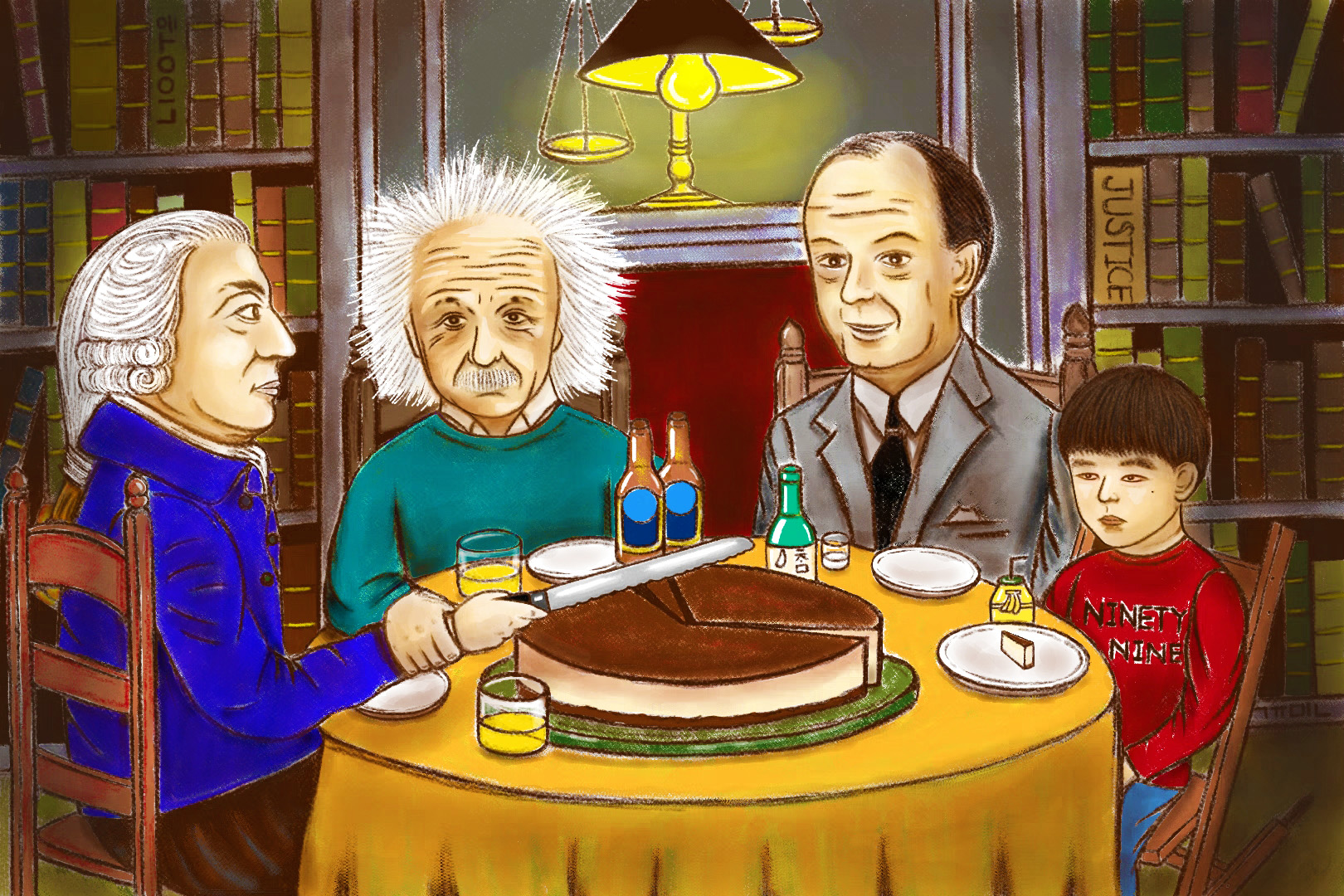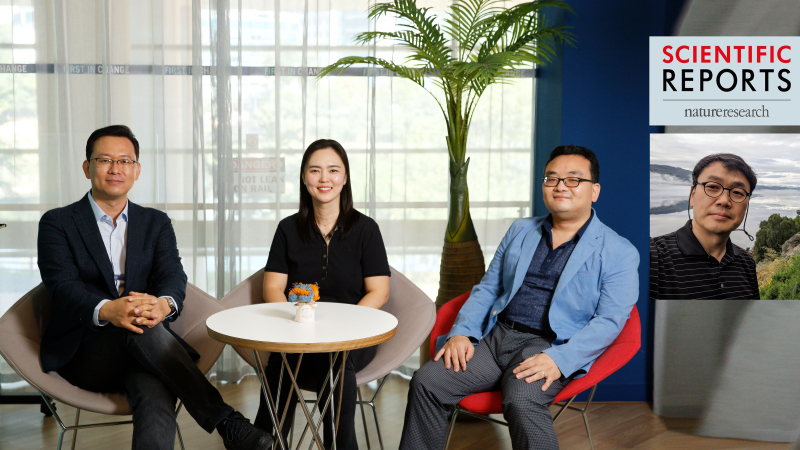A research team, affiliated with UNIST has proposed a fair division method from a completely different perspective, using the Boltzmann division. The research team anticipates that their model could serve as a feasible fair division for complex real-world problems, leading our societies one step closer to distributive justice.
This breakthrough has been led by Professors Chae Un Kim, Jaeup U. Kim, and Cheol-Min Ghim in the Department of Physics at UNIST, in collaboration with Ji-Won Park from the University of Ulsan.

Cake-cutting using the Boltzmann division. When the economist Adam Smith (leftmost) tries to split a cake, the physicist Einstein (second left) urges him to think again. Finding an answer as to how to farily divide this cake is not easy, considering Von Neumann (third left) who had greatly contributed to the development of humankind, and the child who represents 99% of the world’s population are both at present. l Image Credit: Dr. Ji-Won Park
In this study, the research team developed the mathematical model of the Boltzmann division for both homogeneous and heterogeneous cake-cutting problems, where players’ contributions, needs, and preferences for heterogeneous portions could be successfully integrated. The Boltzmann division was then optimized by maximizing the players’ total utility. Through the analysis of empirical data, the research team found that the Boltzmann fair division is a well-balanced division method and has superior aspects beyond the conventional division methods.
According to the research team, the Boltzmann fair division is a division method favorable to the socially disadvantaged or underprivileged, and it is drastically simple, yet highly versatile, and can be easily fine-tuned to directly apply to a variety of social, economic, and political division problems.

Boltzmann division for homogeneous and heterogeneous cake-cutting problems. (b) If applying the Boltzmann fair distribution principle, it is also possible to understand participants’ preferences when serving a cake with different flavors.
“The Boltzmann fair division is simple but highly versatile and can be easily fine-tuned to apply to a variety of division problems,” noted the research team. “Thus, we believe that our work makes a seminal contribution to the feasible fair division for complex, real-world problems.”
Their findings have been published in the September 2022 issue of Scientific Reports. This study has been carried out with the support of the Samsung Future Technology Development Foundation.
Journal Reference
Ji-Won Park, Jaeup U. Kim, Cheol-Min Ghim, and Chae Un Kim, “The Boltzmann fair division for distributive justice,” Scientific Reports (2022).


















